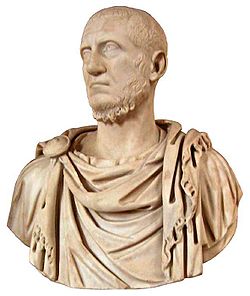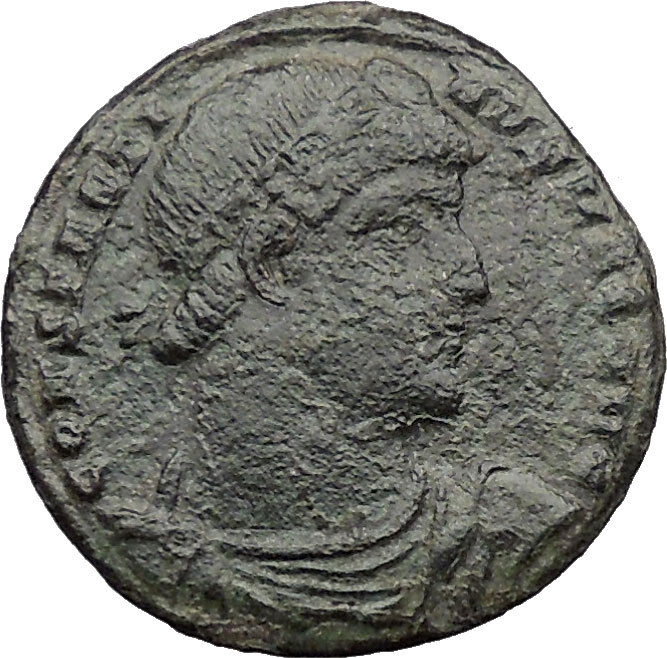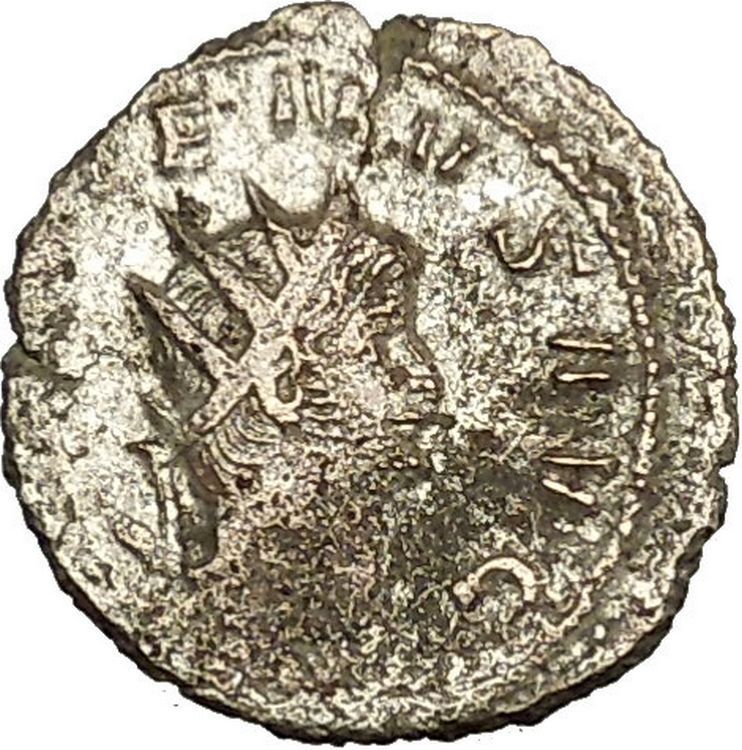|
Tacitus – Roman Emperor: 275-276 A.D.
Bronze Antoninianus 21mm (3.05 grams) Struck circa 275-276 A.D.
Reference: RIC 87
IMP C M CL TACITVS AVG Radiate, draped and cuirassed bust right
FIDES MILITVM Fides standing, head right, holding standard in each hand, XXIS in ex.
You are bidding on the exact item pictured, provided with a Certificate of Authenticity and Lifetime Guarantee of Authenticity.
Fides, the personification of fidelity or bona fides (good faith) in Roman paganism. The Greek equivalent of Fides is Pistis. She was one of the original virtues to be considered an actual religious “divinity”. Numa is said to have built a temple to Fides publica, on the Capitol, and another was built there in the consulship of M. Aemilius Scaurus, B.C. 115. She was represnted as a matron wearing a wreath of olive or laurel leaves, and carrying in her hand corn ears, or a basket with fruit.
Her temple on the Capitol was where the Roman Senate signed and kept state treaties with foreign countries, and where Fides protected them. The temple can be dated to 254 BCE. The original was said to have been built by Numa Pompilius, and a later building during the consulship of M. Aemilius Scaurus (115 BCE).
She was also worshipped under the name Fides Publica Populi Romani (“Public (or Common) Trust of the Roman People”). She is represented as a young woman crowned with an olive or laurel wreath, holding in her hand a turtle-dove, fruits or grain, or a military ensign. She wears a white veil or stola; her priests wore white clothes, showing her connection to the highest gods of Heaven, Jupiter and Dius Fidius.
Traditionally Rome’s second king, Numa Pompilius, was said to have instituted a yearly ceremony devoted to Fides Publica in which the major priests (the three flamines maiores-Dialis, Martialis, and Quirinalis) were to be borne to her temple in a covered arched chariot drawn by two horses on the 1st of October. There they should conduct her services with their heads covered and right hands wrapped up to the fingers to indicate absolute devotion to her and to symbolise trust.
 Marcus Claudius Tacitus (ca. 200 – June 276) was a Roman Emperor from September 25 275, to June 276. Marcus Claudius Tacitus (ca. 200 – June 276) was a Roman Emperor from September 25 275, to June 276.
He was born in Interamna (Terni), in Italia. He circulated copies of the historian Gaius Cornelius Tacitus’ work, which was barely read at the time, and so we perhaps have him to thank for the partial survival of Tacitus’ work; however, modern historiography rejects his claimed descent from the historian as forgery. In the course of his long life he discharged the duties of various civil offices, including that of consul in 273, with universal respect.
After the assassination of Aurelian, he was chosen by the Senate to succeed him, and the choice was cordially ratified by the army. His first action was to move against the barbarian tribes that had been gathered by Aurelian for his Eastern campaign, and which had plundered the Eastern Roman provinces after Aurelian had been murdered and the campaign cancelled. His half-brother, the Praetorian Prefect Florianus, and Tacitus himself won a victory against these tribes, among which Heruli, which granted the emperor the title Gothicus Maximus.
Tacitus probably died of fever (according to Aurelius Victor, Eutropius and the Historia Augusta) – though Zosimus claims he was assassinated – at Tyana in Cappadocia in June 276.
|




 Marcus Claudius Tacitus (ca. 200 – June 276) was a Roman Emperor from September 25 275, to June 276.
Marcus Claudius Tacitus (ca. 200 – June 276) was a Roman Emperor from September 25 275, to June 276.




